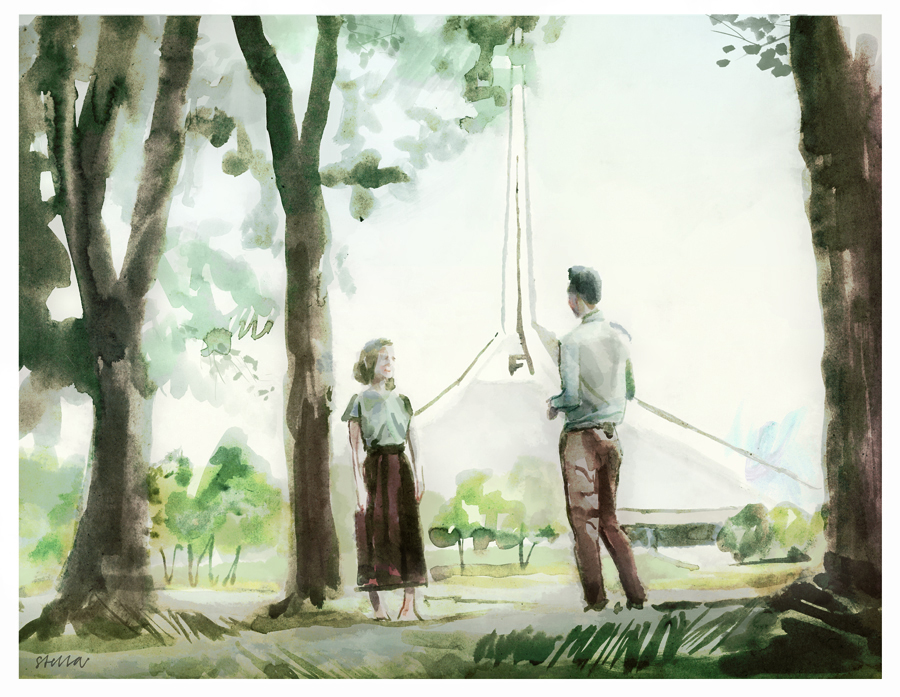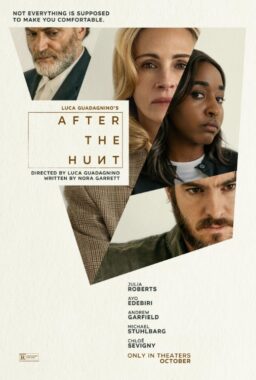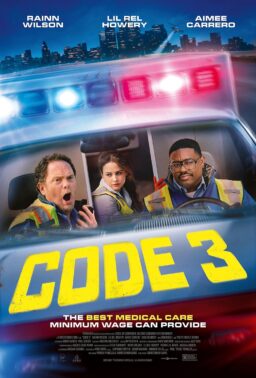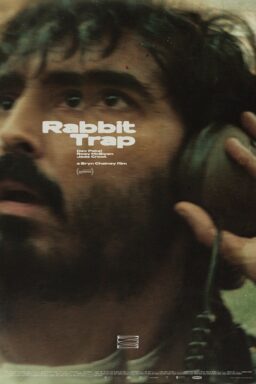We are pleased to offer an excerpt from the latest by online magazine Bright Wall/Dark Room, which now publishes content weekly but with a monthly theme. Their theme for January is the best films of 2017. In addition to this essay on “Columbus” by Nathan Knapp, they also have new essays on “Call Me by Your Name,” “Lady Bird,” “Phantom Thread,” “A Ghost Story,” “mother!,” “Brigsby Bear,” “Lady Macbeth,” “Alien: Covenant” and “Faces, Places.” The above art work is by Tony Stella.
You can read previous excerpts from the magazine by clicking here. To subscribe to Bright Wall/Dark Room, or purchase a copy of their current issue, click here.
Lately I’ve been thinking that our desire for art emanates from a desire for inner quiet. For silence. So much of contemporary life is noise, untranslated, like a room full of radios and televisions and smart phones and stereos all turned on at once, all playing a different kind of music. Sometimes that noise is interesting, but usually it makes it hard to think or feel, because not only is it everywhere around us, including in our pockets, it’s also leached its way into our heads now. More than anything else, on the late September afternoon when I went to see Columbus, I wanted silence.
I was tired. It had been a long few months. My wife and I had entertained a steady stream of out-of-town visitors earlier that summer that had seen our 1-year-old son’s room occupied by guests something like six weekends in a row. I helped my dad move his aging father (mostly involuntarily) and mother (mostly voluntarily) into an assisted living facility here in Tulsa. Now, as the nearest relative, I was spending an hour with them almost every weekend, in an attempt to help stave off their loneliness and confusion and newfound lack of agency—and also trying to stave off my own guilt at not seeing them more often.
In recent years, my grandfather has lost most of his mental faculties to an ever-increasing dementia and depression. The hour I spent with him every weekend—him, barely able to speak anymore, and my grandmother, more and more alone in the room with him—was the most exhausting of the week. It dragged from the shadows of my memory certain darknesses of my childhood I did not want to have to think about on a weekly basis. It grieved me that it was so exhausting. It grieved me that I did not want to go. It grieved me that I went. I wanted a way not to go anymore. I wanted a reason outside myself to go.
None came.
I wish we had a word in English for this feeling: of both desiring something and desiring its opposite. Conflict doesn’t quite do it. To say one has mixed feelings doesn’t cut ice either, because the feelings I felt, during my weekly sittings-across-from my grandfather and grandmother, were not mixed at all—they were entirely distinct, just as they were entirely opposite from each other. The same hand that loves, hates. In the enormous complexity of our lived lives, the presence of one does not necessarily cancel the other. There is no such thing as a purity of heart. But there is freedom in that.
Or at least that’s what I was thinking when I went to see Columbus a few months ago.
*
In Columbus’s opening scene an old professor, who we will later learn is a famous architect, walks through a driving rain. The rain serves as the scene’s only soundtrack. The old professor stands there in it, his back to the camera, looking out over a lush, verdant lawn, being called to by a woman, who is trying to get him to come out of the rain. A few moments later he collapses, and when he does, the film proper begins.
I remember the breath I took in that moment because, when the professor collapsed in the rain, I knew I was in sure hands—the hands of a director absolutely sure of his vision. As the film went on its silence grew, and so did mine, sitting in an almost empty theater, until I felt myself in the grips of a resounding quiet.
That quiet emanates from the camera itself which, in a style immensely evocative of Ozu, rarely, if ever, moves. On my first viewing of the film, I kept thinking to myself how clear it was that this film was made by someone deeply, deeply in love with the art of cinema, that the eye behind it is one that loves its medium. There’s nothing random here, nothing wasted. Every shot of Columbus exudes an intentionality that is controlled but not controlling, each scene an austere, yet life-filled canvas, even when that life is contained within the ambiguous half-dark of one of the film’s many shots of empty corridors.
It’s a film full of small acts of love. I think that’s part of why it gripped me so fiercely: rarely have I seen a film so much about love that also manages to portray its acts without in any way resorting to cheap sentiment, cynicism, or “love yourself” pabulum. Its main characters, Jin and Casey, have both been thrust into the position of caretakers; Casey, seemingly willingly, for her meth-addicted mother, and Jin, who has flown into Columbus from his job as a translator in Seoul to look after his distant father (the old professor of the film’s opening scene), who has fallen into a coma. While Casey tries to spend as much time as she can with her mother—it becomes obvious as the film goes on that this is an effort to keep her mother from going out at night and returning to drugs—Jin spends as little time at the hospital as possible.
Yet Casey wants to go, and do, and leave—a famous architect she looks up to has offered to let her intern at her firm in New York, but Casey hasn’t taken the architect up on it, for fear of what will happen to her mother if she leaves. Much of the film revolves around Casey coming to terms with leaving her mother behind, and Jin, conversely, coming to terms with loving his distant father. Jin is a Korean-American who has chosen to live in Seoul; the expressed reason that he has come to be with his father in Columbus is so that he can help bring him back to Seoul before he dies, to be with the rest of his family. In Korean culture, he tells Casey, upon his father’s death he would be expected to grieve in the most public and expressive manner possible. But the fact is he wants his father to die. Casey asks him if he were able to take his father back to Korea, would he perform as expected. He says he would.
I don’t know if I’ve seen any film recently that so movingly explores notions of responsibility to one’s family, identity, and culture. What is beautiful here is that the love expressed by both Casey and Jin in Columbus doesn’t come out of free choice. In Jin’s case, especially, it doesn’t even come out of a conscious desire to love. He is simply doing what is expected of him, and this is beautiful, because even in its admission of defeat, it’s an expression of hope. By the film’s end, Jin, who had wanted to leave, will choose to stay on indefinitely by his father’s side, and Casey, who had wanted to stay, will have chosen to go. Each will have chosen freedom, but not in the ways it is typically defined by our culture. This is freedom that is uneasy. Freedom that hurts to endure.
This was the same kind of freedom that had been on my mind more and more in the weeks and months before I first saw the film. A freedom which contains all the comfort of a freefall through thin-air, or a free-fall during which one feels the crushing impact of pavement well before one strikes the concrete. It was not specifically in visiting my silent grandfather that I felt free. I felt trapped in it, in a way that returned me to my childhood, and not in the ways that one wants. But I was also coming to the gradual realization, during those long, hot weeks, and those horrible weekly visits, that it was up to me whether I went or not; that I didn’t have to feel reconciled to him in order to go. That I could love him—and her—without having resolved anything from our mutual past, simply by going and sitting with them, and listening. That I could feel enchained by every moment with them, I could hate every minute of the drive to see them, of entering the facility, of riding the elevator up to their floor, walking down the long white hallway to their room, and still be committing an act of love, because love does not require a pure heart. What love requires is freedom. Otherwise it is not love.
*
I didn’t know much about Columbus when I went to see it on that dreary day back in September. I didn’t know that it was the first feature film from Kogonada, a director who, until recently, was a doctorate student in film studies and had become internet-famous for making video essays, focused on directors like Ozu, Bresson, Kubrick, and Wes Anderson. This made me absurdly happy, since it often seems like the barriers to entry for those who want to enter the filmmaking world are impossibly high for people who don’t have proper connections (like, say, a grad student and dad living in Nashville, Tennessee). I loved that Kogonada was an academic who began making his video essays—which are beautifully-edited, expertly-felt homages—out of frustration with the deadening, dispassionate approach to art common to academia.
“[Academia] was sort of killing the thing that I loved,” he told Indiewire earlier this year. “I just want to make something that is trying to pursue the same type of form that [Ozu] was pursuing, but trying to think about it in our present moment.” You can dissect and you can analyze, but at some point, if you love something, you have to engage with it on the level of its making, and of its essence. You can take apart and take apart and take apart, theorizing until your brains are fried in a vat of theory, boiling in the morass of interpretation, or you can step forward and make something. Fortunately for us, Kogonada has done the latter.
You can step back and listen, and look, and feel, as the characters in Columbus are constantly doing. One of my favorite scenes in the film takes place outside of one of Casey’s favorite buildings, a bank whose exterior walls are almost entirely made of glass. She begins telling Jin all the facts she knows about the building, facts (the film implies) that have been gleaned from taking a tour. As she speaks, her reflection is shown doing the talking. She enunciates with the practiced cadence of a tour-guide. Jin stops her mid-sentence. He doesn’t want the tour guide explanation. He wants to know why she loves the building.
Why does she love this building? It is, after all, a building. The sound cuts away, and the soundtrack falls to silence. We can’t hear what she’s saying, but her whole posture and affect change, and it’s clear that she’s speaking from within herself, out of that silence; she is no longer a reflection in a window, but the full expression of herself. It’s a bold choice by Kogonada to elide her actual speech, but the silence says more. Both times I’ve seen the film, this scene makes me want to weep.
And it’s the fact that Columbus is, ultimately, full of scenes like this that makes it one of the best films of 2017. It’s a warm film full of cold air, finding meaning in buildings which explore life’s very lack of it, a film which finds humanity based in the need to find a way to remain even if you leave, and to love even if you don’t feel love. It’s a film about solace.
And yet that solace isn’t comforting. The film’s final moments are ones of departure: Casey’s mother standing on the porch in tears, watching Casey leave; Casey in tears, leaving. It’s a risky move—usually showing tears is a good way to encase a scene, particularly a final one, in a dense layer of cellophane-like sentimentality. And Kogonada does risk sentimentality here. Yet Casey in the car, like her mother left behind on the porch, is in pain, and that pain eclipses any sense of triumph. She’s making the hard choice. She’ll have to live with what happens next.
What’s interesting to me is how this choice—leaving behind her mother—opens up a new kind of freedom for her mother, who will no longer exist in a space in which she has someone actively looking out for her. Columbus does nothing to suggest that things will be okay for her, nor does it suggest that Jin’s father will ever recover, or that father and son will ever reconcile, or that Jin will ever comes to terms with what is culturally expected of him. But in Columbus, reconciliation isn’t the point, coming to terms isn’t the point. In lived life, reconciliation and resolution are just temporary motions.
In the final scene between Jin and his father—whose face is never shown directly in the film—Jin sits at the foot of the hospital bed, reading. His father doesn’t know he’s in the room with him. It isn’t an easy place to be, but he is there.











